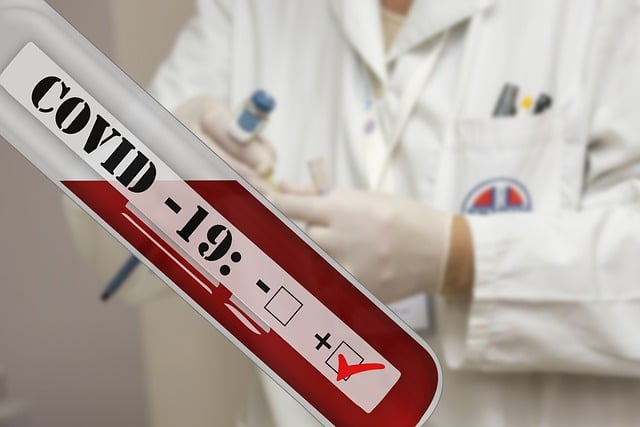Home health checks, especially the UK Diabetes Blood Test, are gaining popularity as a convenient way to monitor well-being, offering early detection of conditions like diabetes for timely interventions. In the UK, these tests are crucial for at-home monitoring, providing individuals with a deeper understanding of their body's response to food, medication, and lifestyle changes. At-home testing offers convenience, privacy, immediate feedback, and better communication with healthcare providers, facilitating adjustments to treatment plans, particularly beneficial for type 1 diabetes patients or those at risk of complications from long-term high blood sugar. Conducting the UK Diabetes Blood Test involves proper equipment preparation, cleaning fingers, using a lancing device, loading blood onto a test strip, and waiting for results to ensure accurate data for personal reference or healthcare providers.
In today’s digital era, home health checks are revolutionizing how individuals in the UK monitor their well-being, particularly for chronic conditions like diabetes. This article delves into the growing prevalence and benefits of at-home testing, focusing on the UK diabetes blood test as a game-changer in self-care. Understanding how to conduct these tests effectively empowers folks to navigate their health with confidence. By following a simple step-by-step guide, you can master the UK diabetes blood test, ensuring consistent monitoring and better management of your condition.
- Understanding Home Health Checks: Benefits and Prevalence in the UK
- The Role of Diabetes Blood Tests: Monitoring at Home
- Step-by-Step Guide to Conducting a UK Diabetes Blood Test at Home
Understanding Home Health Checks: Benefits and Prevalence in the UK
Home health checks are becoming increasingly popular in the UK, offering individuals a convenient and accessible way to monitor their overall well-being. One of the most common at-home tests is the UK diabetes blood test, which allows people to check their blood sugar levels from the comfort of their own homes. This simple yet powerful tool has far-reaching benefits for public health.
By enabling early detection of potential health issues, such as diabetes, home health checks can significantly impact disease management and prevention. The ability to regularly monitor vital signs like blood glucose levels can lead to timely interventions, improved quality of life, and reduced healthcare costs. Moreover, the prevalence of chronic conditions like diabetes is rising in the UK, making at-home testing an attractive and necessary option for many individuals seeking proactive health management.
The Role of Diabetes Blood Tests: Monitoring at Home
In the UK, diabetes blood tests are a vital part of at-home health monitoring for individuals living with this chronic condition. These regular checks allow for early detection of any fluctuations in blood sugar levels, enabling quick action to maintain optimal control. By performing UK Diabetes Blood Test routines at home, patients can gain a deeper understanding of their body’s response to food, medication, and lifestyle changes. This proactive approach empowers them to make informed decisions about their health management.
At-home testing provides convenience, privacy, and immediate feedback. With easy-to-use kits available, individuals can track their glucose levels daily, ensuring they stay within the recommended ranges. This continuous monitoring is particularly beneficial for those with type 1 diabetes or those at risk of complications from long-term high blood sugar. Regular UK Diabetes Blood Tests facilitate better communication between patients and healthcare providers, allowing for adjustments to treatment plans as needed.
Step-by-Step Guide to Conducting a UK Diabetes Blood Test at Home
Conducting a UK Diabetes Blood Test at home is a simple and effective way to monitor your blood sugar levels, especially for those living with diabetes. Here’s a step-by-step guide to ensure accuracy:
1. Prepare Your Equipment: Make sure you have all necessary items, including test strips, a lancing device, disposable lancets, and a blood glucose meter. Check the expiration dates on your supplies to ensure they are within their valid period.
2. Clean Your Finger: Wash your hands thoroughly with soap and water, and use the alcohol swabs provided to clean a small area on the tip of your finger. This step is crucial to minimise contamination and get accurate readings.
3. Lance and Collect Blood: Using the lancing device, gently prick your fingertip to draw a drop of blood. Apply light pressure to obtain around 0.3-0.5μL of blood.
4. Load the Blood onto the Test Strip: Place the strip into the meter, ensuring it’s properly inserted. Then, apply the drop of blood to the designated area on the test strip.
5. Wait for Results: Follow the instructions provided by your meter. Most devices will display your blood sugar level within a few seconds. Read and record the results carefully for future reference or to share with your healthcare provider.
Health checks at home, particularly the UK diabetes blood test, offer unprecedented convenience and accessibility. By enabling individuals to monitor their health in the comfort of their own homes, these tests empower people to take an active role in managing their well-being. The widespread availability and growing prevalence of home health checks in the UK demonstrate a shift towards proactive healthcare, where prevention and early detection are prioritized. As technology advances, it’s anticipated that more conditions will be accessible for at-home testing, further transforming the healthcare landscape.
